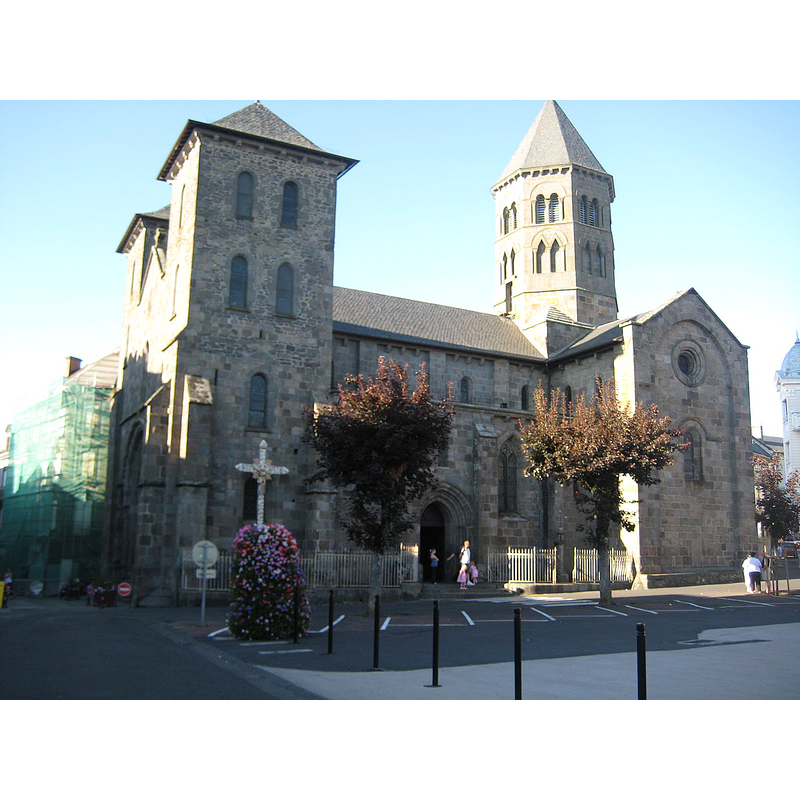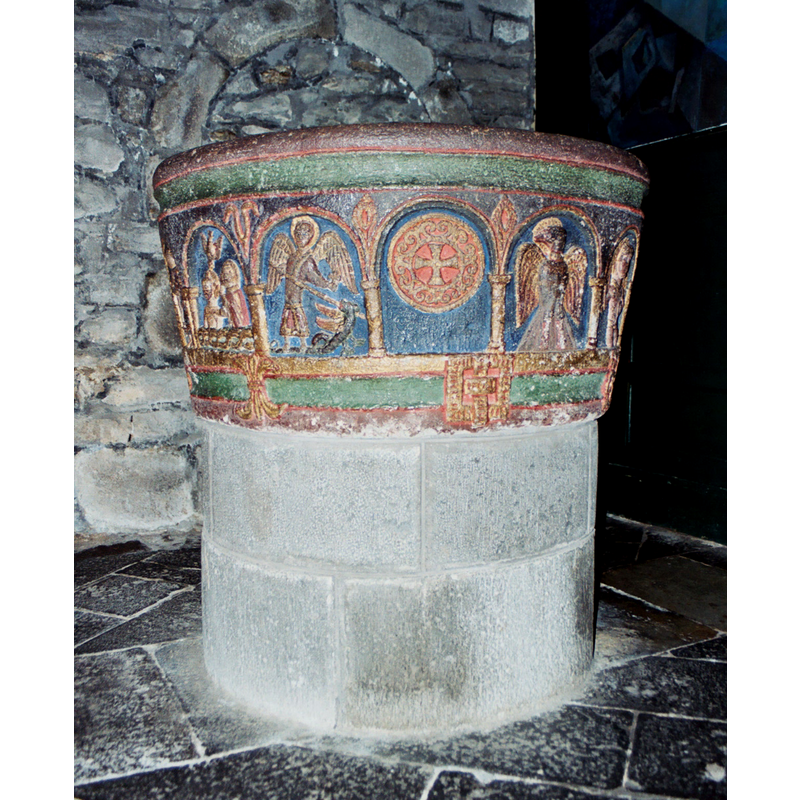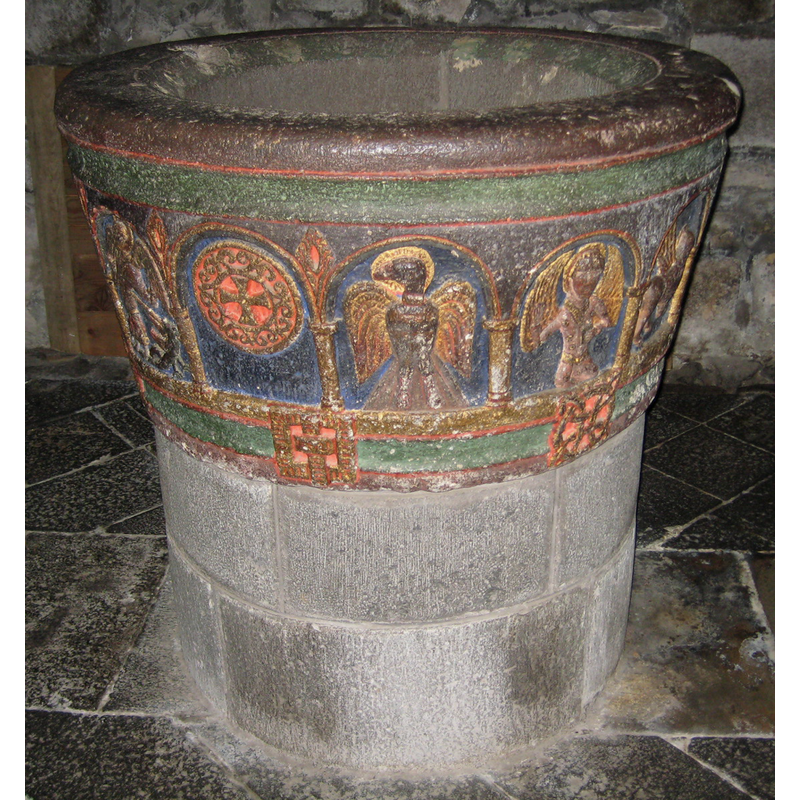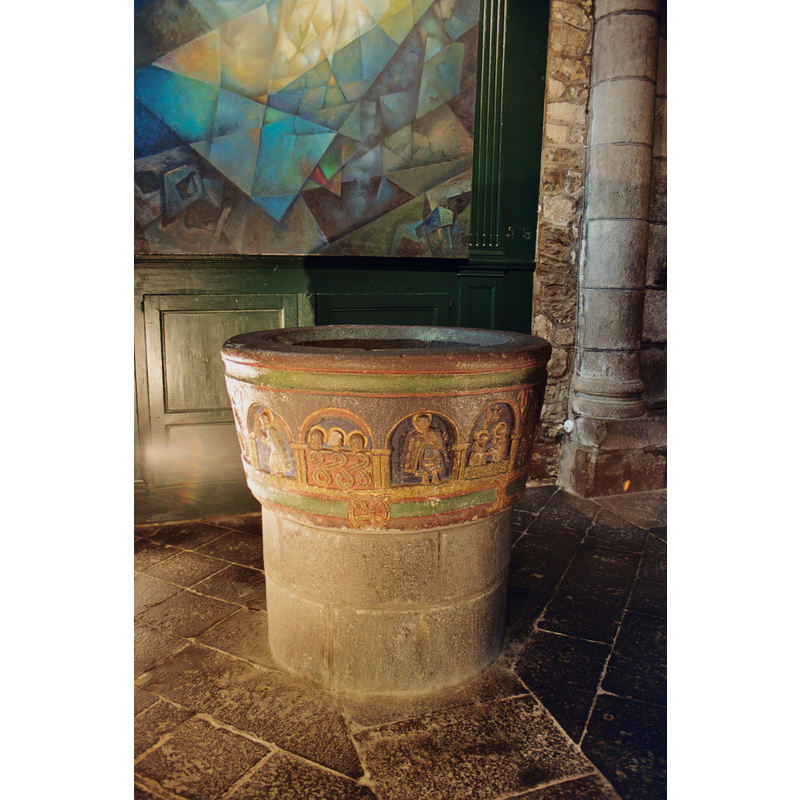Mauriac
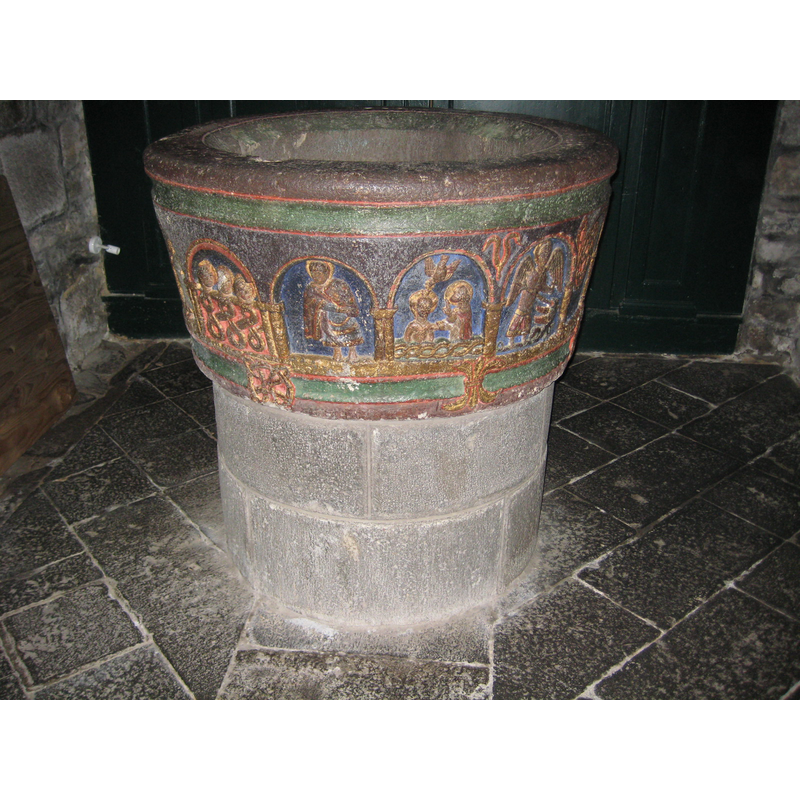
Image copyright © Brian Alvars Catlos, 2008
stading permission
Results: 33 records
B01: design element - motifs - interlace - River Jordan? Baptism scene
Scene Description: a band of gold interlace on a red background; three haloed heads peek over it -- this scene could relate to Matthew 3, 5-12
Copyright Statement: Image copyright © www.art-roman.net, 2002
Image Source: www.art-roman.net
Copyright Instructions: Permission to reproduce the web images received (e-mail Sept. 27, 2002)
B02: human figure - head - haloed - 3
Scene Description: Peeking over a band of interlace -- Guillamont suggests that the interlace represents flames rather than water -- Image courtesy and copyright © www.art-roman.net
Copyright Statement: Image copyright © www.art-roman.net, 2002
Image Source: www.art-roman.net
Copyright Instructions: Permission to reproduce the web images received (e-mail Sept. 27, 2002)
B03: Apostle or saint - St. John the Baptist?
B04: New Testament - public life of Christ - baptism of Christ
B05: Apostle or saint - St. Michael - slaying the dragon
B06: Christ - Christ in Majesty - right hand raised in benediction - left hand holding book? or chalice?
Scene Description: under a richly decorated arch, Christ, enthroned, holds what appears to be a book or a chalice in His left hand
Copyright Statement: Image copyright © Juan Antonio Olañeta, 2004
Image Source: Juan Antonio Olañeta [www.claustro.com]
Copyright Instructions: Image and permission received (e-mail of 9 October 2004)
B07: Christ - Agnus Dei - haloed - with cross - in a circle - rope motif
B08: angel - haloed - open wings - Gabriel? - Annunciation?
B09: Apostle or saint - Evangelists - St. Mark - symbol - winged lion
B10: Apostle or saint - Evangelists - St. Luke - symbol - winged bull
B11: Apostle or saint - Evangelists - St. John - symbol - eagle
B12: Apostle or saint - Evangelists - St. Matthew - symbol - angel
B13: design element - architectural - arcade - round arches
B14: symbol - cross - Greek - in a circle
BBL01: design element - motifs - interlace - quatrefoil with circle - god symbol
BBL02: design element - motifs
BBL03: design element - motifs - floral - fleur-de-lis
BS01: design element - motifs - varied
view of basin
view of basin
view of basin
view of basin
view of basin - detail
view of basin - detail
view of basin - side
view of basin - side
view of basin - side
view of church exterior
view of font
view of font
view of font in context
view of font in context
INFORMATION
FontID: 00340MAU
Object Type: Baptismal Font1
Church/Chapel: Basilique Notre-Dame-des-Miracles
Church Patron Saints: St. Mary the Virgin
Church Location: 15200 Mauriac, France
Country Name: France
Location: Cantal, Auvergne-Rhône-Alpes
Directions to Site: Mauriac is located on the D922, 65 kms N of Aurillac, in the Auvergne
Ecclesiastic Region: Diocèse de Saint-Flour
Font Location in Church: Inside the church. in the S aisle, W end
Century and Period: 12th century, Romanesque
Credit and Acknowledgements: We are grateful to www.art-roman.net, to Juan Antonio Olañeta, of www.claustro.com, and to Dr. Brian Catlos, for their photographs of this church and font
Church Notes: original church 11thC and 12thC. Listed in Mérimée [ref.: PA00093544]: "L'église actuelle a été construite à l'emplacement d'une église plus ancienne qui aurait été fondée par la reine Théodéchilde, petite-fille de Clovis. Plan de croix latine avec trois nefs. A l'intersection des transepts s'élève une coupole sous une tour octogonale. Deux autres tours carrées flanquent la façade occidentale. La nef est divisée en cinq travées, formées de piliers carrés. Les chapiteaux du choeur, des absides latérales, de la première arcade de la nef et des collatéraux sont sculptés. Certains sont historiés, d'autres ornés de feuillages ou d'animaux fantastiques. A l'extérieur, tous les modillons sont sculptés différemment. La porte méridionale est en ogive, mais l'ornementation est romane. Présence de bas-reliefs détruits durant la Révolution. L'archivolte du portail représente le zodiaque. Le tympan est couvert par un bas-relief représentant l'Ascension."
Font Notes:
Click to view
Tub-shaped baptismal font first described in Chabau (1897) and dated in Lasteyrie (1929) to the 12th century. Listed as an early baptismal font in the web version -augmented- of the Églises romanes de Haute Auvergne (tome 1, pp. 45-50) [cantalroman.free.fr/Histoire/quotid.htm]. The illustration available in the Index of Christian Art -from an original photograph by A.K. Porter (1923)- shows a tub-shaped stone font with a rim under which there is an arcade of round arches; each arch contains a figure, a scene or a decorative motif, the latter, typically Norman: Christ in Majesty (?); Agnus Dei; haloed figure of an angel; a lovely interlace motif with large loops over which appear three human heads; next is a haloed figure, (a saint?); another arch contains the baptism of Christ: Christ at left, John at right and the dove above in a "diving" position; this whole scene stands on a double-strand interlace motif; the next arch shows St Michael fighting a dragon. The four symbols of the Evangelists are included, each under a different arch (to the right of the winged ox, in the next arch, appear a pick-ax (?) and four rods). The lower rim of the font has four medallion-like ornaments: a loop motif, a sheaf-like motif, a triquetra motif and another loop motif. The base on which it rests appears modern. The Dictionnaire des églises... (1966-) dates it also to the 12th century and gives the stone as trachyte. Mentioned also in Delcor (1973), who identifies an Agnus Dei on its side and dates the font to the 12th century. Le Guillou (1993), who studies the program in detail, describes fourteen arches, in which he identifies the following scenes: 1)Agnus Dei, nimber and with cross; 2)Annunciation: Mary and Gabriel; 3)John the Baptist baptises followers in the Jordan [cf. Matthew 3, 5-12]; 4)John baptises Christ; 5)St. Michael and the dragon/devil; 6)an ornate cross; 7)Tetramorph: the four symbols of the Evangelists; 8)hammer and chisel? or hammer and nail?; 9)human figure with hammer? and chisel? or nail? [NB: Le Guillou (ibid.) prefers his own interpretation of this scene as the Instruments of the Passion and the figure about to hammer Christ to the cross, rather than Chabau's more conventional view that this is really the signature of the artist, a portrayal of himself and his tools]. The font is now painted in lively colours, though not very appropriately assigned. Craplet (1992) describes the program as: Christ in Majesty -- Pascal Lamb inscribed in a circle -- angel -- three heads emerging from a baptismal font? -- Baptism of Christ by John -- St. Michael defeating the dragon -- potent cross inscribed in a circle of foliage -- four symbols of the evangelists: eagle, angel, lion and bull/ox - tools of the artist and the artist himself. Noted with a diagram of the iconographical programme in Moulier (1999). Guillaumont (2003), who studies the iconography of this font in the context of other monuments in this area of the Auvergne, suggests that the scene of the man with tools appears "comme la liaison logique entre l'image du chrétien architecte et les évangélistes qui occupent les médaillons suivants", and makes reference to Noah and the prophet Elisha. Listed in Palissy [ref.: PM15000248]: "fonts baptismaux [...] 12e siècle [...] Creusés dans un bloc de trachyte du pays, la cuve repose sur un fût circulaire. Fond extérieur peint en rouge, avec les motifs dorés."
COORDINATES
Church Latitude & Longitude Decimal: 45.218056, 2.331944
Church Latitude & Longitude DMS: 45° 13′ 5″ N, 2° 19′ 55″ E
UTM: 31T 447547 5007391
MEDIUM AND MEASUREMENTS
Material: stone, trachyte (volcanic stone)
Number of Pieces: two
Font Shape: tub-shaped (mounted)
Basin Interior Shape: round
Basin Exterior Shape: round
Diameter (includes rim): 118 cm* / 120 cm**
Basin Total Height: 58 cm*
Notes on Measurements: * Craplet (1992: 309) -- [Le Guillou (1993: [76]) gives the circumference as 3.70 cm] **[Muzac (1983) and Moulier (1999)]
REFERENCES
Dictionnaire des églises de France, Belgique, Luxembourg, Suisse, Paris: R. Laffont, 1966-
Chabau, J-B., abbé, "La cuve baptismale de Mauriac, XII siècle", t. VIII/5, Revue de l'art chrétien, 1897
Craplet, Bernard, Auvergne romane, La Pierre-qui-vire, Yonne: Zodiaque, 1992
Delcor, M., "Les cuves romanes et leur figuration en Roussillon, Cerdagne et Conflent", 4, Cahiers Saint-Michel-de-Cuxa, 1973, pp. 96-109, 4 pl.; p. 102
Enlart, Camille, Manuel d'archéologie française depuis les temps mérovingiens jusqu'à la Renaissance, Paris: Alphonse Picard & fils, 1902
Guillaumont, Agnès, Mythologie chrétienne de l'eau à travers quelques exemples de la sculpture romane d'Auvergne et du Velay: Saint-Michel-d'Aiguilhe, Chassignolles, Nonette, Mauriac, Mozac, Saint-Saturnin (Cantal): Association du site de Gergovie, 2003
Index of Medieval Art, The Index of Medieval Art, Index of Christian Art, Princeton, [s.d.]. URL: https://theindex.princeton.edu/.
Lasteyrie du Saillant, Robert Charles, conte de, Architecture réligieuse en France à l'époque romane (2e éd., avec une bibliographie critique par Marcel Aubert), Paris: A. Picard, 1929
Le Guillou, Jean, "Essai d'interprétation des sculptures de la cuve baptismale romane de l'église paroissiale de Mauriac", 55, 1, Revue de la Haute-Auvergne, 1993, pp. 76-88; p. [76]-88
Moulier, Pierre, Églises romanes de Haute-Auvergne: contributions à un iventaire regional, Nonette: Éditions Créer, 1999
Muzac, André, Notre-Dame-des-Miracles, 1983
Porter, A. Kingsley, Romanesque sculpture of the pilgrimage roads, Boston MA: [s.n.], 1923
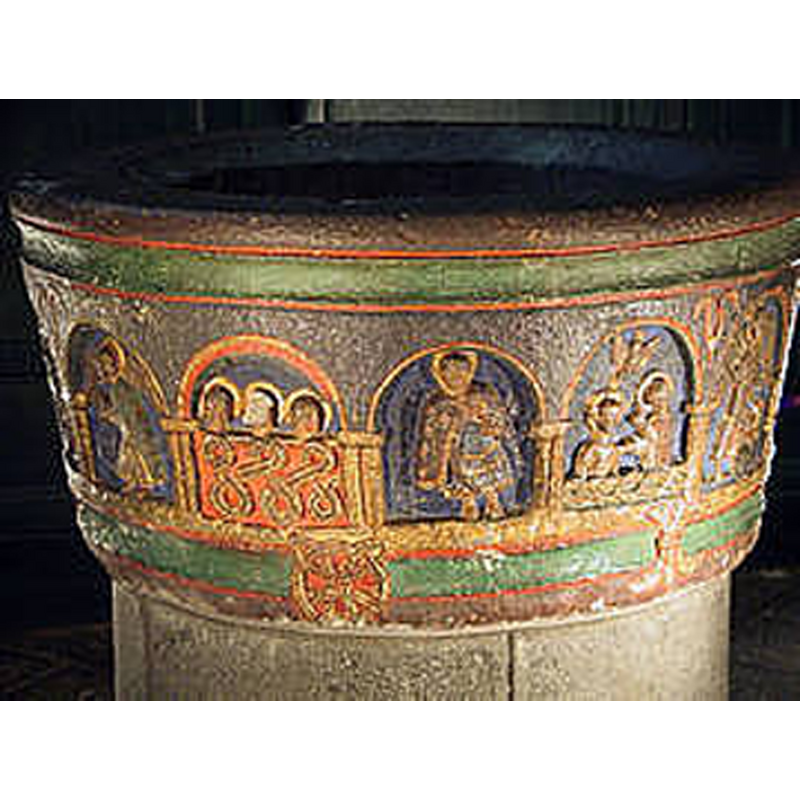
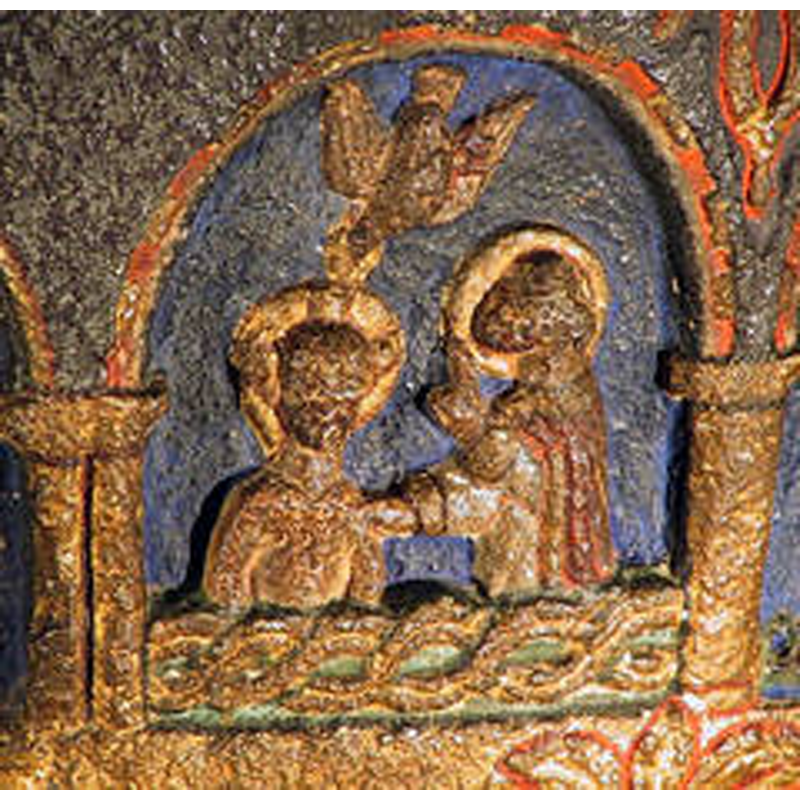
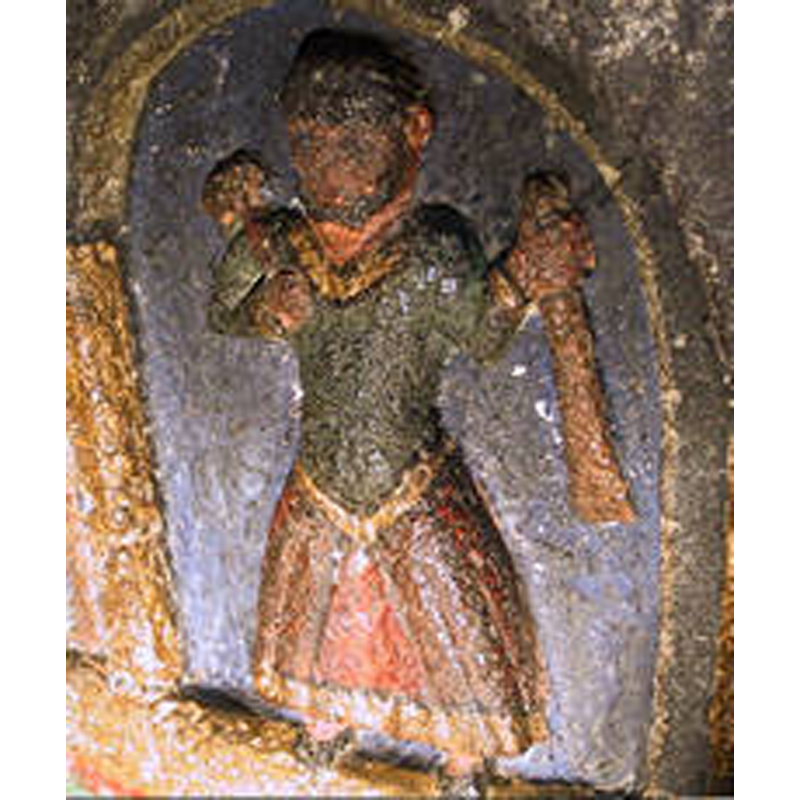
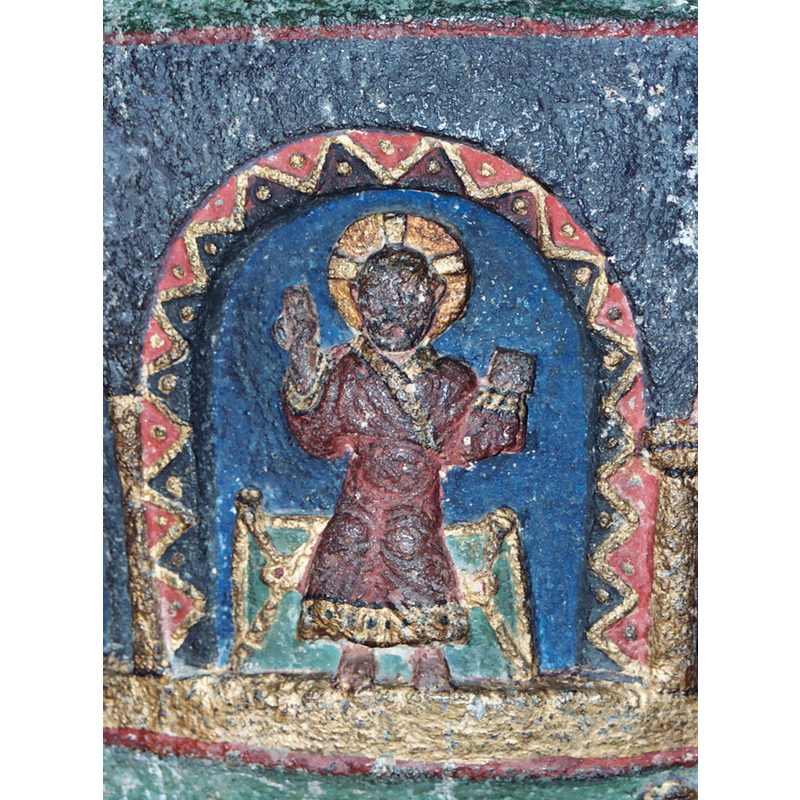
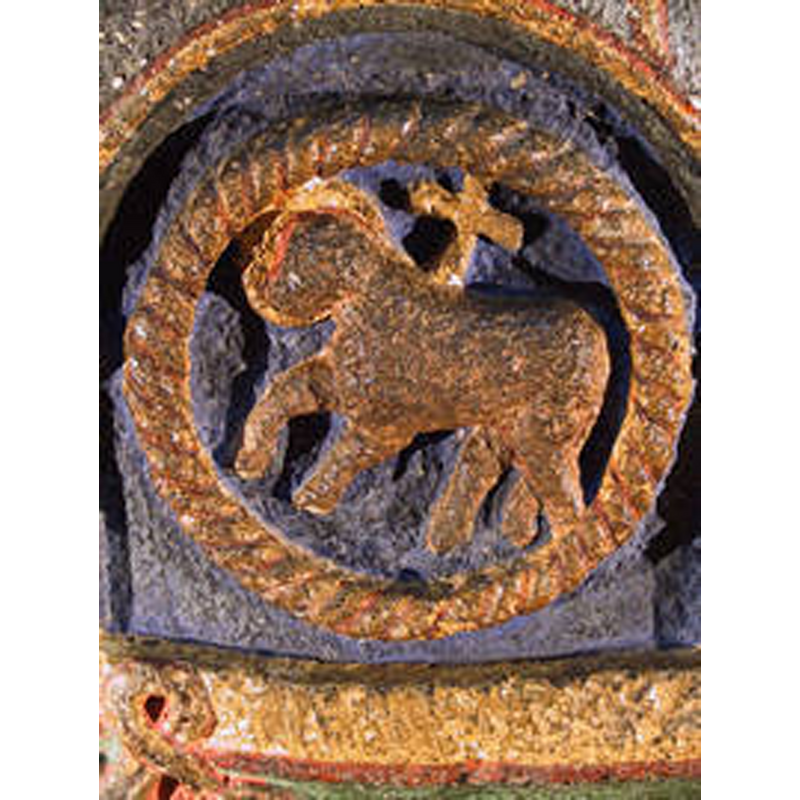
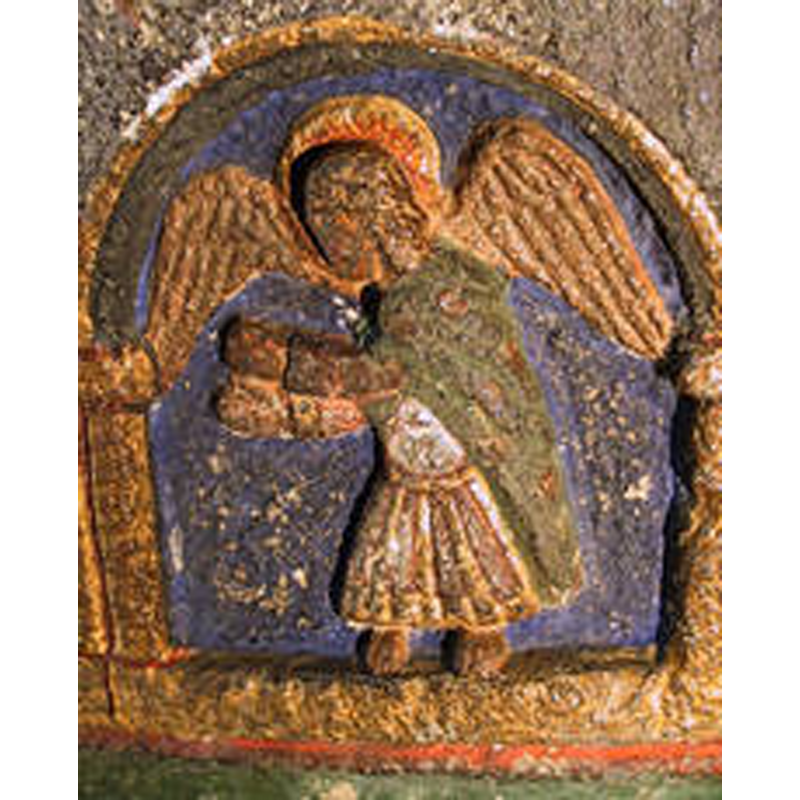
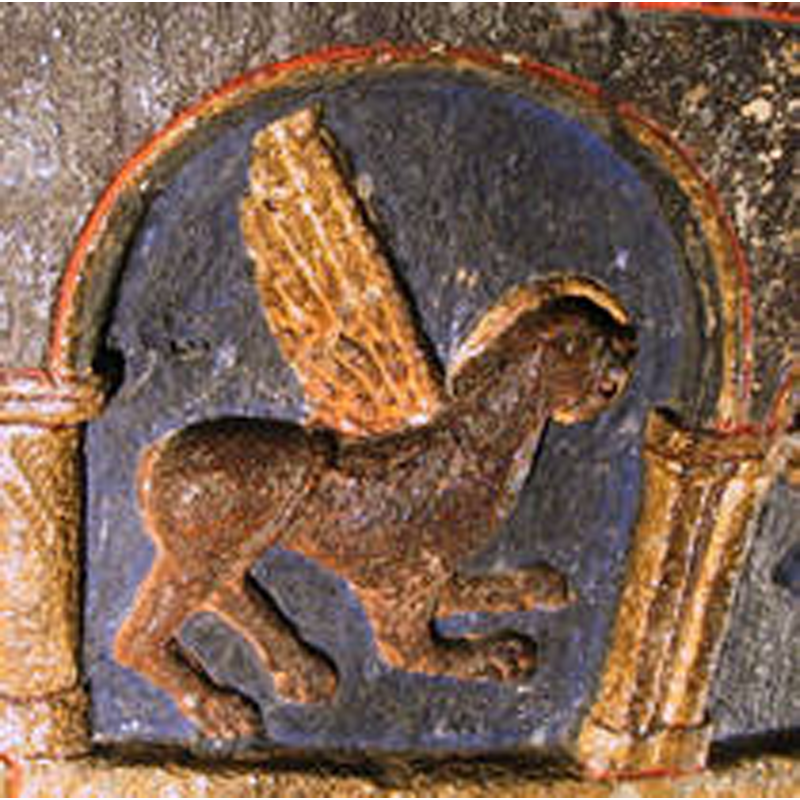
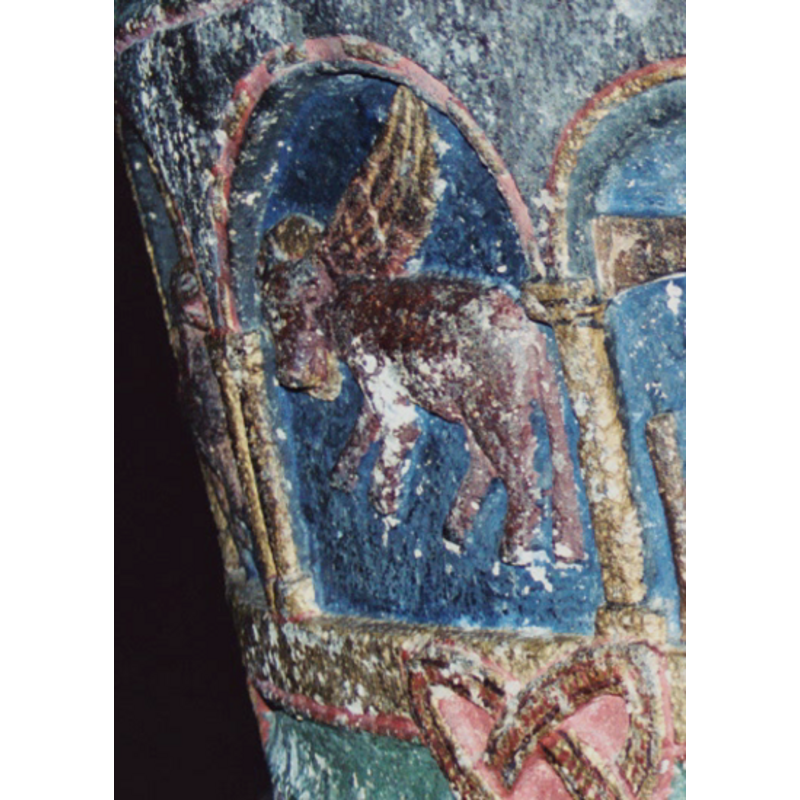
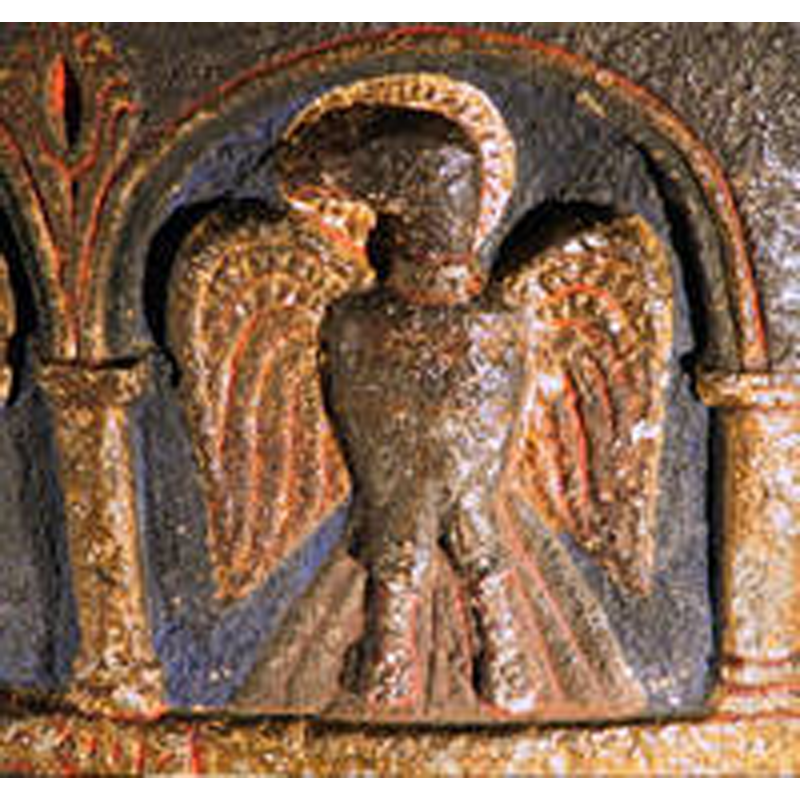
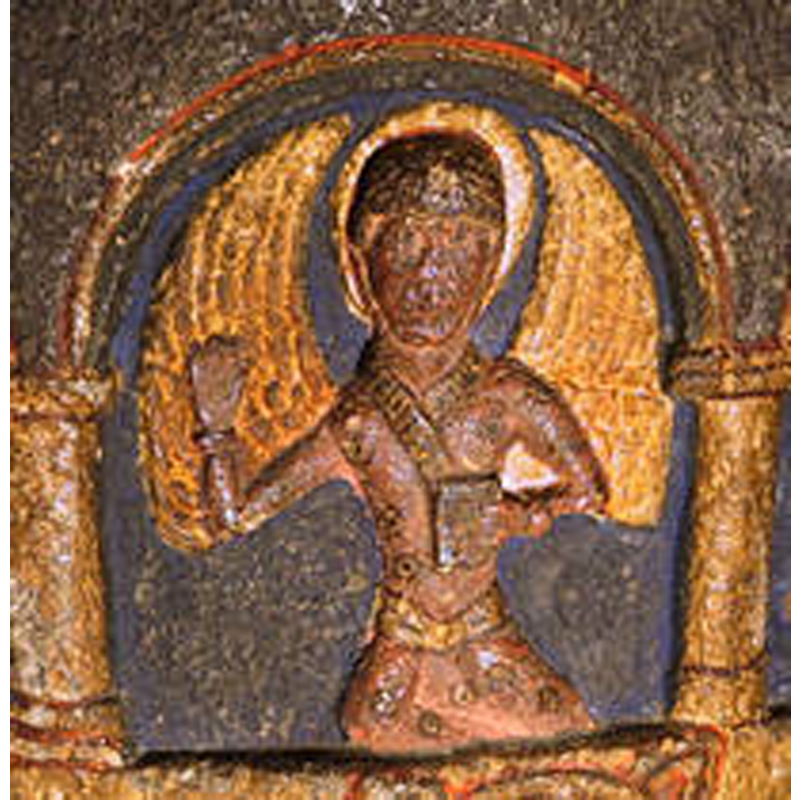
![housing figures and scenes [cf. FontNotes]](/static-50478a99ec6f36a15d6234548c59f63da52304e5/compressed/1041009037_compressed.png)

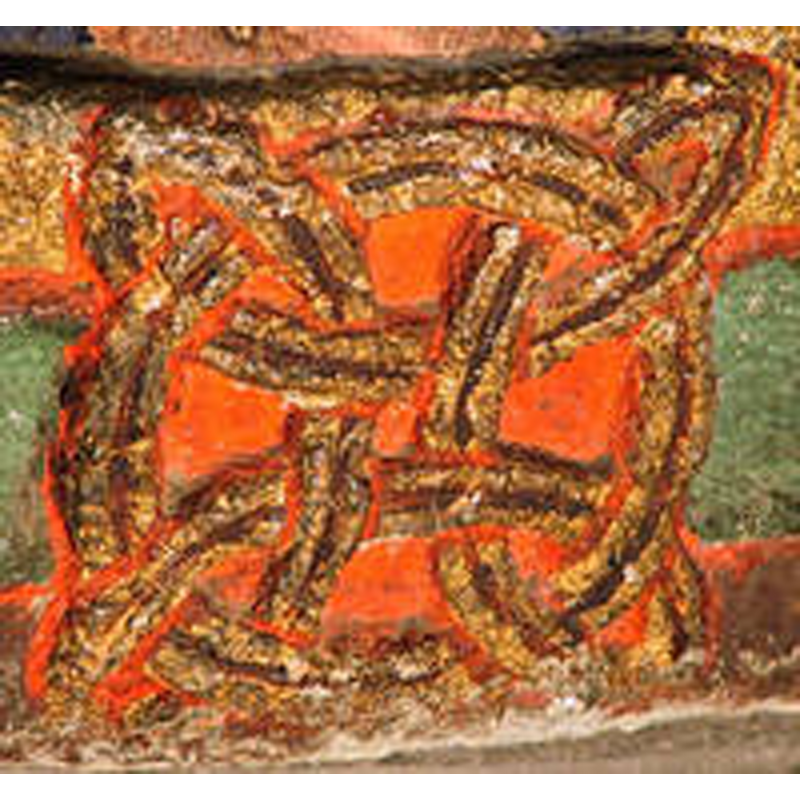
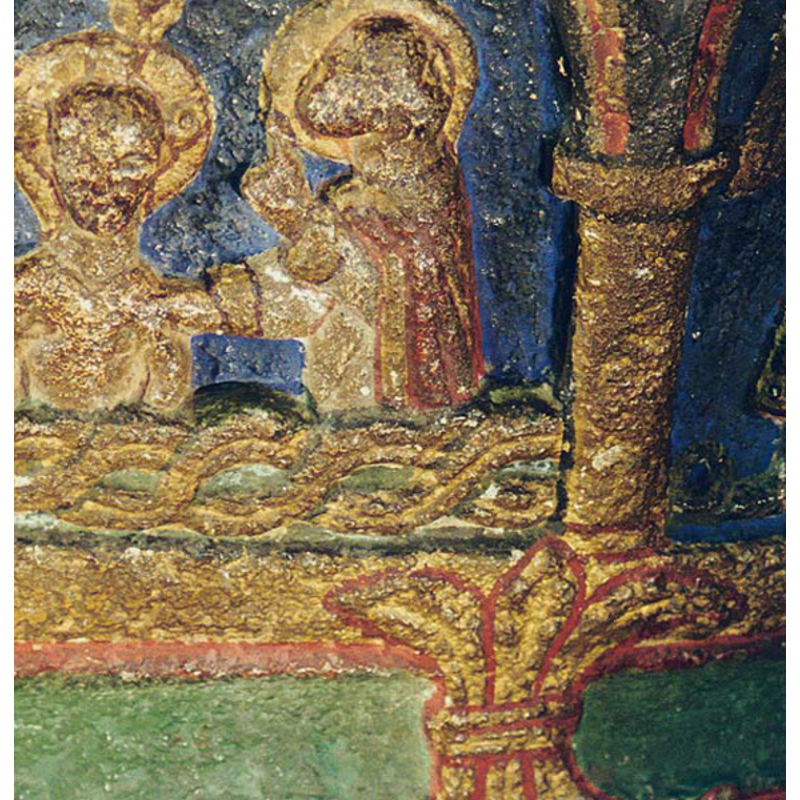
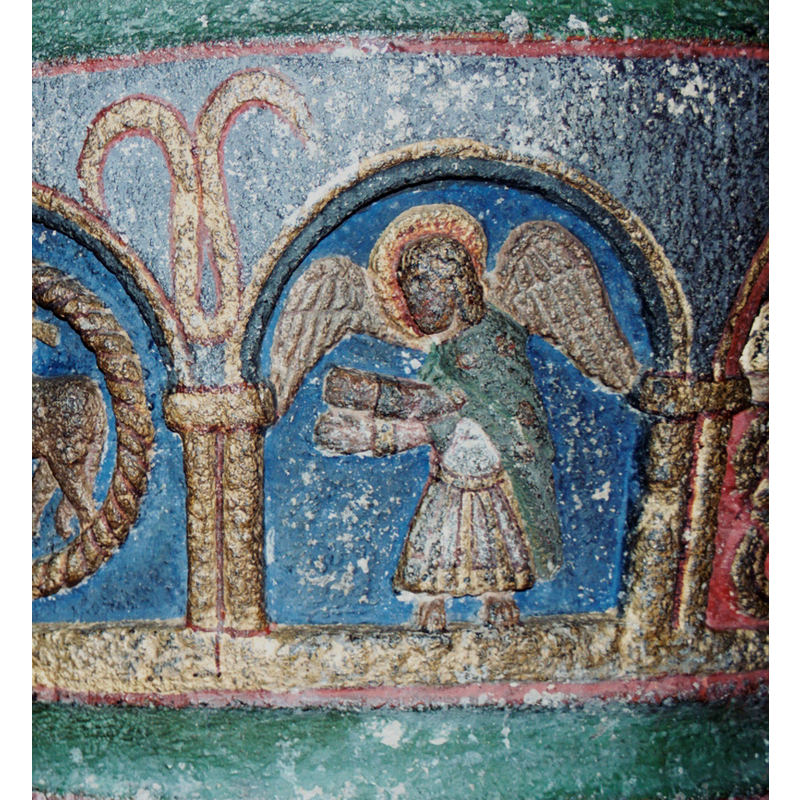
![[cf. Font notes]](/static-50478a99ec6f36a15d6234548c59f63da52304e5/compressed/1080831007_compressed.png)
![[cf. Font notes]](/static-50478a99ec6f36a15d6234548c59f63da52304e5/compressed/1080831008_compressed.png)
![[cf. Font notes]](/static-50478a99ec6f36a15d6234548c59f63da52304e5/compressed/1080831009_compressed.png)
![notice the damage and repair on the upper right side [cf. FontNotes]](/static-50478a99ec6f36a15d6234548c59f63da52304e5/compressed/1080831010_compressed.png)
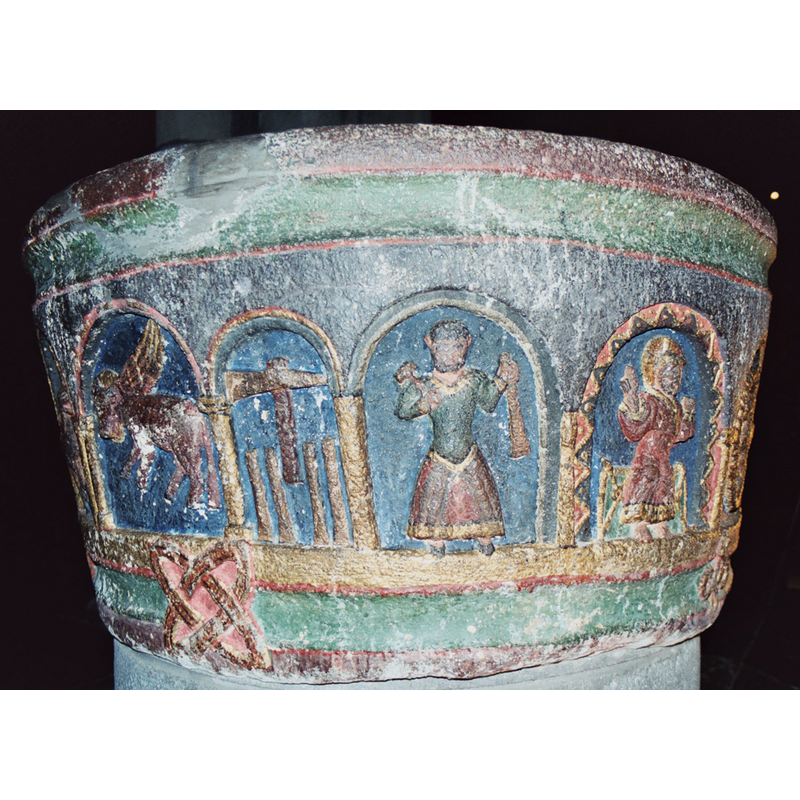
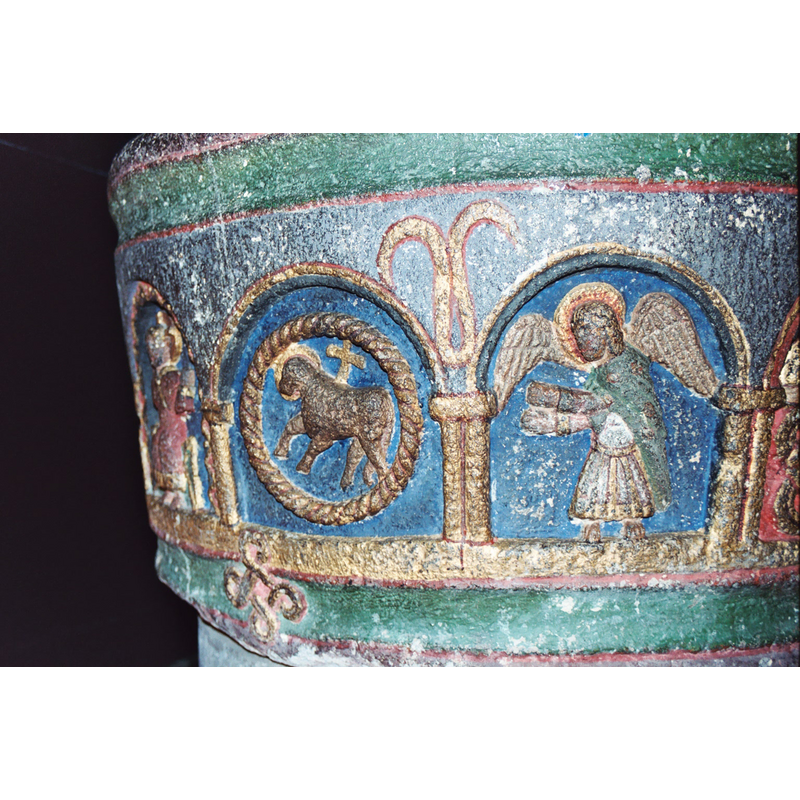
![[cf. Font notes]](/static-50478a99ec6f36a15d6234548c59f63da52304e5/compressed/1080831005_compressed.png)
![[cf. Font notes]](/static-50478a99ec6f36a15d6234548c59f63da52304e5/compressed/1080831006_compressed.png)
![[cf. Font notes]](/static-50478a99ec6f36a15d6234548c59f63da52304e5/compressed/1080831011_compressed.png)
